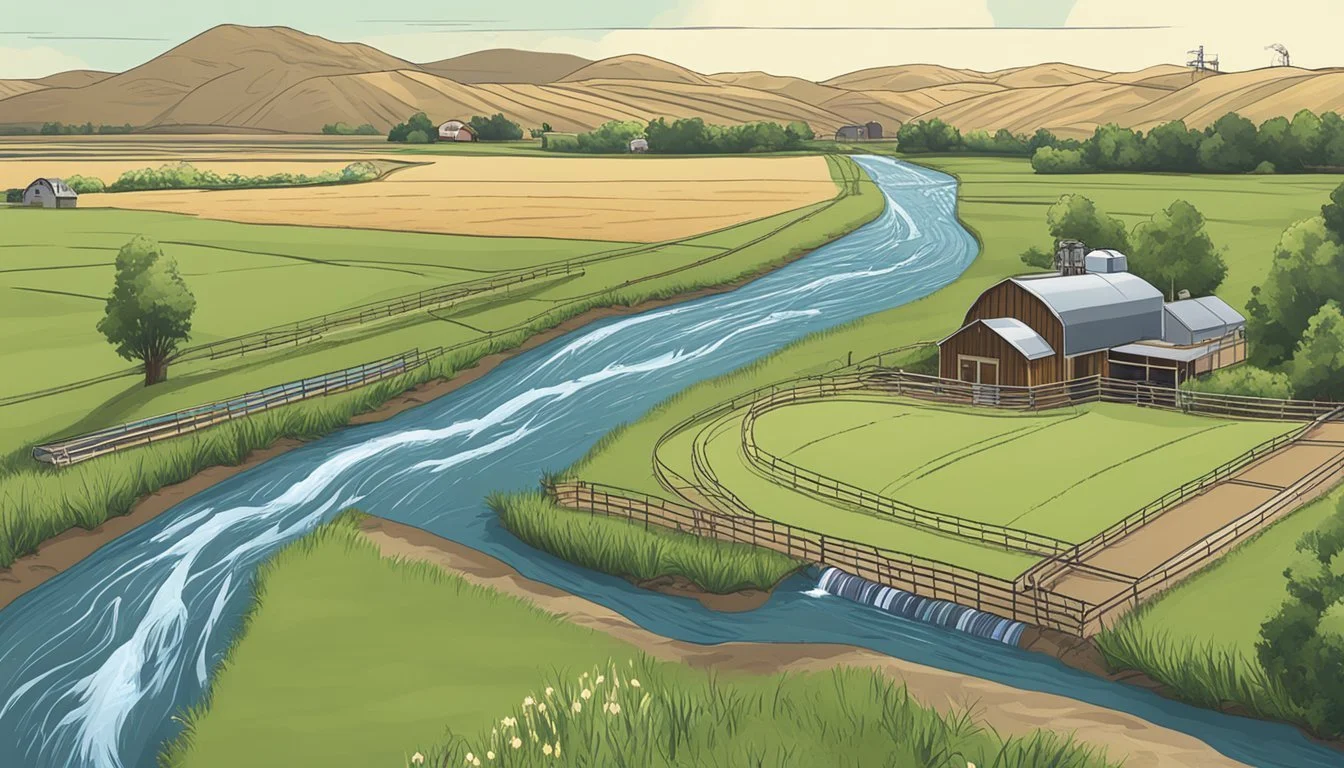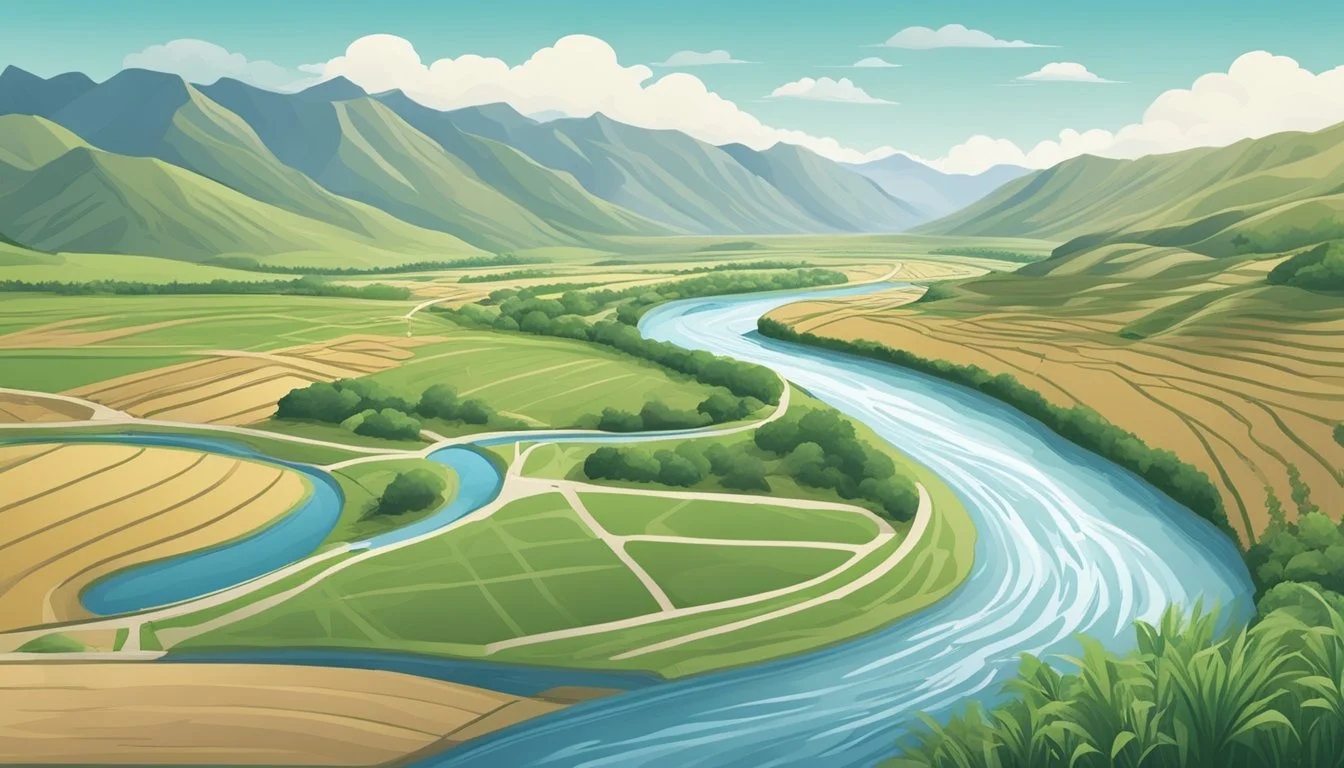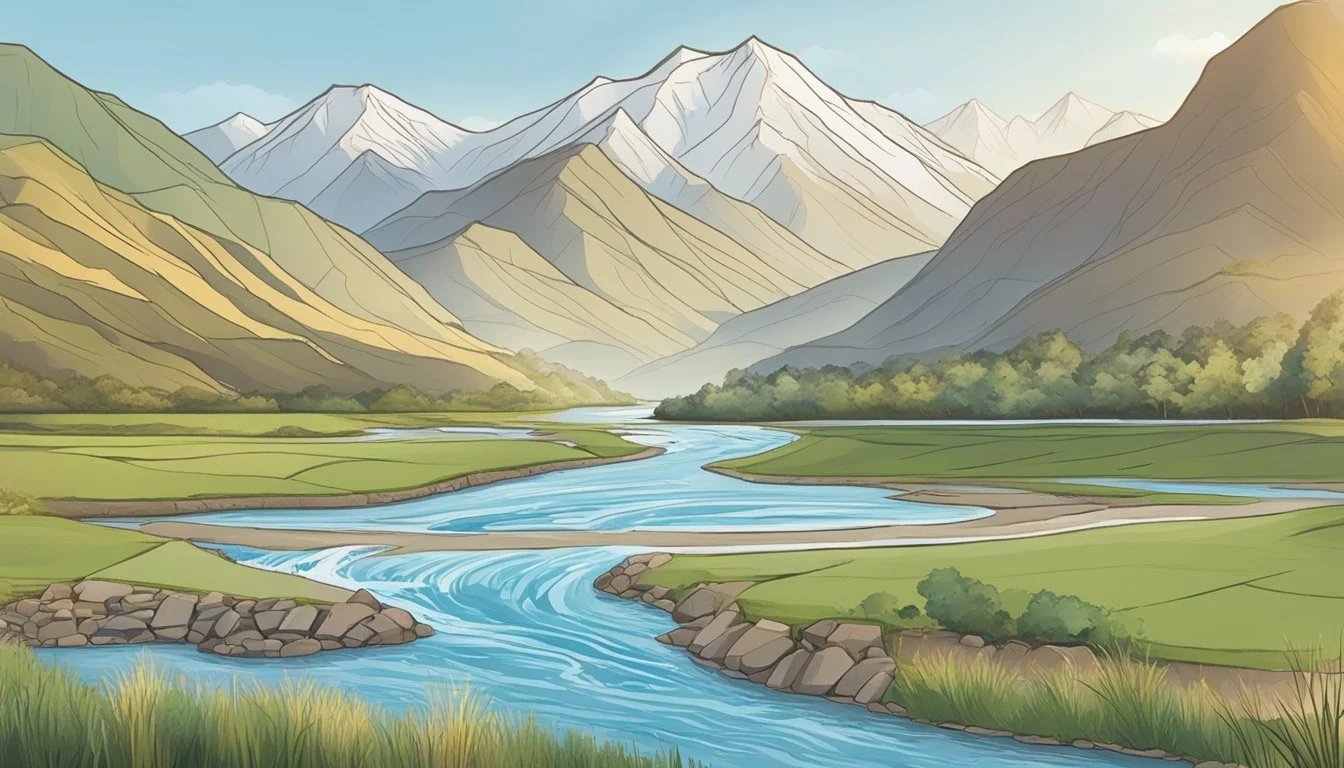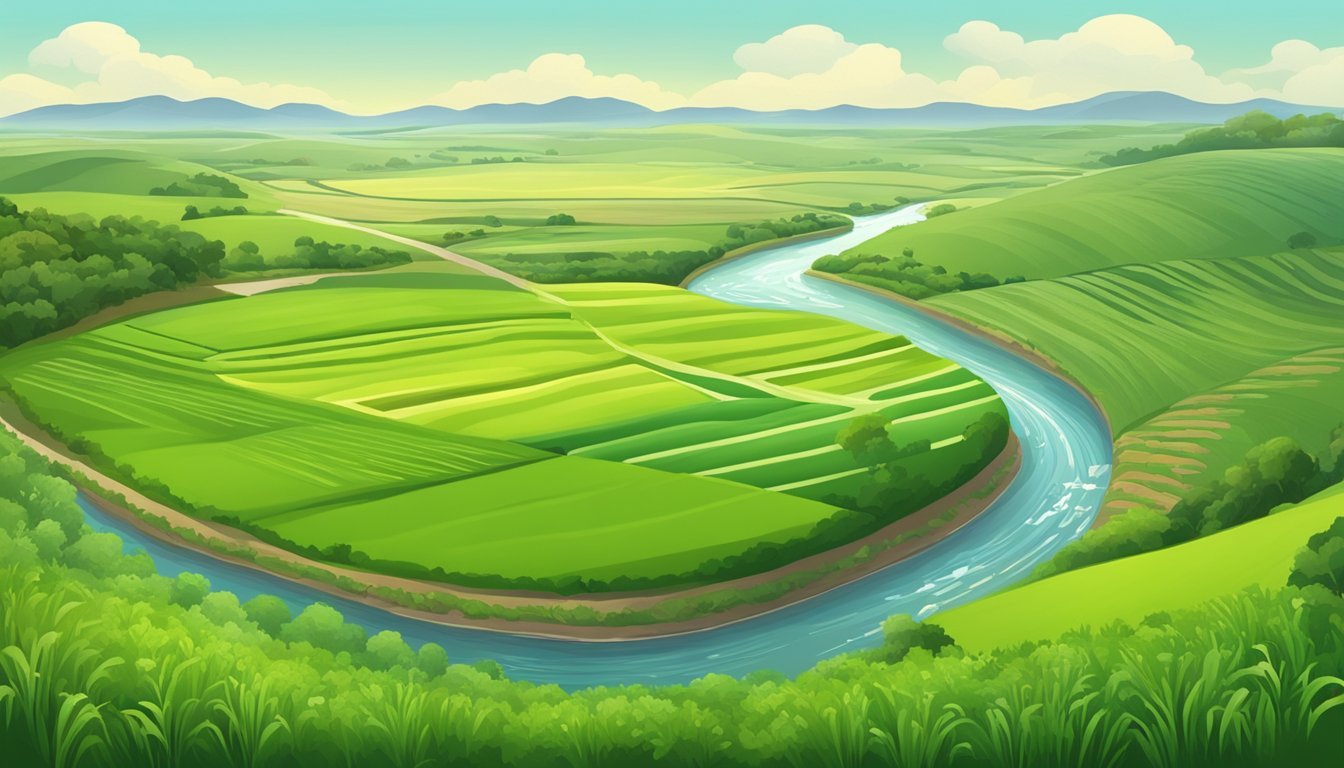Water Rights in Idaho
Navigating Legal and Environmental Challenges
Water rights are a critical aspect of Idaho’s management of its water resources. In Idaho, water rights authorize the use and allocation of water to individuals, organizations, and farmers, establishing who can use water, how much, and for what purpose. The state operates under the doctrine of prior appropriation, commonly summarized as "first in time, first in right," which affords priority to older water rights over newer ones in times of shortage. This system is managed and enforced by the Idaho Department of Water Resources (IDWR), which oversees water rights administration, including the process of obtaining new rights, changing existing ones, and adjudicating claims.
Understanding water rights in Idaho also involves recognizing the different types of rights within the state. These range from surface water rights for rivers and streams to groundwater rights for wells and springs. The state also recognizes various uses for water, such as irrigation, domestic use, and industrial applications. Water rights are intimately linked with land ownership and can play a pivotal role in agricultural practices and development within the state.
The complexities of water rights in Idaho extend to the adjudication process and the creation of water districts, designed to manage water delivery and resolve conflicts amongst rights holders. Additionally, the IDWR provides resources such as a water rights overview, FAQs, and tools for searching water right records, ensuring transparency and accessibility for stakeholders to navigate the intricacies of water rights in the state.
Historical Background of Water Rights in Idaho
Water rights in Idaho have a complex history rooted in both legislative actions and judicial decisions, with particular focus on the adjudication process in the Snake River Basin.
Origins and Development
In Idaho, the doctrine of prior appropriation, which grants water rights to those who first put the water to beneficial use, has been the cornerstone of water law. This principle was adopted in the late 19th century, aligning with the state’s incorporation into the Union in 1890. The Idaho Legislature has played a pivotal role in crafting state water law, further influenced by pivotal cases heard by the Idaho Supreme Court that refined legal interpretations. The state’s water rights systems have evolved through a series of legislative reforms and court rulings that have sought to balance the demands of agricultural, industrial, and environmental needs.
Snake River Basin Adjudication
The Snake River Basin Adjudication (SRBA) is a significant legal process that began in 1987 and seeks to catalogue all water rights in the Snake River Basin. This comprehensive adjudication is one of the largest in United States history, involving numerous claims and the meticulous review of water rights. The SRBA aims to clarify water rights to aid in the effective management and allocation of water within the basin—a crucial effort given the Snake River’s importance to the region’s economy and environment. The process involves the collaboration of state agencies, claimants, and the judiciary, with the Idaho Supreme Court holding jurisdiction over final decrees.
Legal Framework
The legal framework surrounding water rights in Idaho is anchored by specific state laws and is influenced by federal laws due to the overlap of jurisdictions, especially concerning public lands.
Idaho Water Laws
The Idaho Constitution and state statutes form the backbone of water law in the state. They establish that all waters within Idaho's natural channels, including ground waters, are public waters. The Idaho Department of Water Resources (IDWR) plays a pivotal role in managing these water resources. Their responsibilities include the allocation and distribution of water rights, which authorize the use of water by private individuals and organizations. The application process for new water rights, or modifications to existing ones, is meticulously governed by IDWR procedures.
The Role of the Federal Government
While Idaho statutes provide the structure for water rights at the state level, the Supreme Court has often addressed conflicts between state and federal water laws. This is where the Supremacy Clause of the U.S. Constitution comes into play, asserting that federal law takes precedence over state law when there is a direct conflict. On public land in Idaho, managed by entities such as the Bureau of Land Management or the Forest Service, federal legislation can significantly influence water rights and resources management.
Within this framework, interactions between state agencies like the IDWR and federal government bodies are critical for coherent water governance, especially in legal disputes that reach the Supreme Court, where interpretations of the U.S. Constitution's Supremacy Clause can have far-reaching implications for Idaho's water laws.
Water Rights Administration
The state of Idaho administers water rights through structured programs and processes designed to manage and allocate water resources effectively.
Department of Water Resources
The Idaho Department of Water Resources (IDWR) is the primary authority responsible for managing water rights in Idaho. It oversees water allocation, permitting, and distribution across the state's 98 active water districts. The department ensures that water rights are upheld according to the rule of prior appropriation, also known as "first in time, first in right."
Water Supply Bank
IDWR operates the Water Supply Bank, a mechanism allowing for the voluntary rental or leasing of water rights. This system enables water rights holders to temporarily transfer their rights for beneficial uses elsewhere, providing flexibility in water management and helping to optimize the state's water use during shortages or in times of surplus.
Adjudication Process
The water rights adjudication process involves the legal confirmation and quantification of existing water rights. Through this judicial process, IDWR and the court work together to determine all water rights within a specific basin, ensuring that each right is accurately recorded and enforced in accordance with Idaho law. This comprehensive review is essential in resolving disputes and providing clarity and certainty to water rights holders.
Water Rights Types and Uses
In Idaho, water rights are critical to managing the state's water resources effectively. They are defined by the date of use and the type of use, with a priority system determining the hierarchy in times of scarcity.
Surface Water and Groundwater Rights
Idaho recognizes distinct rights for the use of both surface water and groundwater. Surface water rights allow for the diversion of water from sources such as rivers, streams, and lakes. Contrastingly, groundwater rights pertain to water extracted from beneath the earth's surface, typically accessed via wells.
Irrigation and Agricultural Use
A significant application of water rights in Idaho is for irrigation and agricultural purposes. Farmers rely on an established priority date system which ranks their water rights based on the date of first use. This ensures a structured allocation, critical for crop production and supporting the agricultural sector. Recharge efforts, such as Aquifer Recharge Districts, play a pivotal role in replenishing water sources used in agriculture.
Domestic and Municipal Usage
The domestic and municipal use of water pertains to consumption by households and cities. For these users, water rights ensure a consistent supply for everyday activities and public services. Whether sourced from surface water or groundwater, these rights maintain the balance between individual consumption needs and overall resource sustainability.
Water Rights Management
In Idaho, water rights management is a structured and regulatory process ensuring the equitable distribution and use of water resources. This process is crucial for supporting agriculture, protecting the environment, and managing the state's vital water supplies.
Aquifer Recharge Districts
Aquifer Recharge Districts are designed to supplement natural water recharge to aquifers. They focus on maintaining the health of the aquifer by artificially introducing water to counteract the effects of withdrawals. The Idaho Department of Water Resources oversees these operations to stabilize declining water levels and support long-term water supply sustainability.
Groundwater Management Districts
Groundwater Management Districts (GWMDs) represent a collective effort by water users to address water concerns unique to their area. These districts employ measures to monitor and manage groundwater use to prevent overextraction. Management plans within these districts may include strategies for efficient water use, such as water rationing or the establishment of metering systems.
Critical Groundwater Areas
Critical Groundwater Areas (CGAs) are designated by the state when groundwater resources are determined to be at risk. Within these areas, stringent measures are applied to prevent water-level declines and ensure the continuation of existing water rights. Regulatory actions in CGAs can include restrictions on new well drilling or establishing controls on the amount of water that can be withdrawn.
Managing Idaho's water resources involves addressing the challenges associated with Groundwater Management Areas, Aquifer Recharge Districts, and Critical Groundwater Areas. The state's approach reflects a balance between resource protection and the needs of diverse water users.
Water Rights Disputes
Water rights disputes in Idaho often involve complex legal challenges that can have significant implications for individuals, businesses, and government entities.
Interstate Controversies
Interstate controversies regarding water rights can arise when water sources cross state boundaries. In the case of the Snake River Basin, disputes have historically emerged over the allocation of water resources between different states, requiring careful negotiation and legal intervention to ensure an equitable distribution.
Federal vs State Jurisdiction
The balance of power between federal and state jurisdiction over water rights is a recurring issue in Idaho. A notable example is when the U.S. Department of Justice becomes involved, as seen in a district court hearing where issues around whether federal land agencies can retain water rights on public lands were addressed. These scenarios force the Idaho Attorney General’s Office to navigate complex legal terrain to assert state authority versus federal oversight.
Litigation and Settlements
Litigation and settlements often result when consensus over water rights cannot be reached. Court Documents may detail the resolutions or ongoing litigation processes between parties such as the Idaho Farm Bureau Federation and other stakeholders. Examples include legal agreements aimed at improving the sustainability of resources, such as the Eastern Snake Plain Aquifer, which was subject to a water rights agreement resulting in improvements after years of legal wrangling. Litigation can end in settlements that often require long-term management plans and careful monitoring to assure compliance.
Water Rights for Agriculture and Ranching
In Idaho, the management of water resources is a critical aspect for both ranching and agricultural sectors. These entities navigate a complex system of laws and regulations to ensure their water supply for crucial operations.
Ranchers and Grazing Allotments
Ranchers in Idaho often rely on Federal Grazing Allotments overseen by the Bureau of Land Management (BLM) for livestock feed. These allotments are lands designated specifically for cattle and livestock grazing. For ranchers to operate on these lands, they must adhere to BLM guidelines, ensuring sustainable use without overburdening water resources. Water rights associated with these allotments are vital for maintaining the health and hydration of grazing cattle, especially during the dry seasons.
Farming Associations and Canal Companies
Agricultural operations in Idaho, particularly within the Eastern Snake Plain Aquifer region, depend on a network of canal companies to distribute water. These canal companies are often governed by farming associations, which hold water rights for irrigation purposes. The distribution of water is directed through an extensive canal system, which manages the water derived from various sources, including natural springs and surface water. The navigability and reliability of these canals are essential for crop irrigation and overall farm productivity.
Environmental Concerns and Water Rights
In Idaho, the intersection of environmental concerns and water rights is shaped by climate change impacts and conservation efforts. These issues jointly influence water policies and practices throughout the state.
Impact of Climate Change
Climate change manifests in Idaho through altered precipitation patterns and increased temperatures, contributing to drought conditions and reduced snowpack. These environmental shifts have direct consequences on water rights, as they threaten the quantity and timing of water available. The Idaho Conservation League monitors these changes, advocating for policies that consider the long-term sustainability of water resources. The state witnesses competition for water allocation between agricultural needs and instream water requirements to support ecosystems.
Conservation Efforts
To counteract the effects of climate change, conservation efforts in Idaho include implementing water-saving technologies and improving irrigation practices. The optimization of water use serves to maintain the balance between human needs and environmental health. Moreover, initiatives to leave specific quantities of instream water address the needs of fish habitats and maintaining healthy rivers, reflecting a dual commitment to the economy and the environment.
Public Advocacy and Outreach
Public advocacy and outreach in Idaho concerning water rights involve diverse groups invested in ensuring the sustainability and fair allocation of water resources. These entities emphasize education, legality, and consistent water policy practices.
Stakeholder Groups
Stakeholder groups play a pivotal role in advocating for water rights in Idaho. Forest Service and other agencies focus on safeguarding public land interests through sustainable water management practices. Key organizations facilitate dialogues amongst farmers, conservationists, and urban entities to protect the integrity of water districts. Additionally, grassroots organizations and coalitions often intervene in legislative processes to promote the interests of those affected by water rights adjudications and policies.
Educational Resources
They prioritize the dissemination of information regarding water rights processes and the importance of natural water conservation. The Idaho Department of Water Resources provides comprehensive materials, such as the Water Rights Brochure, to educate the public on the critical nature of water rights. Furthermore, entities like Boise State Public Radio often report on water rights issues, fostering a well-informed public discourse. These educational efforts are crucial in ensuring community members understand and can actively participate in water rights discussions and policy-making.
Accessing and Managing Water Rights
Accessing and managing water rights in Idaho involves specific procedures and regulations defined under state water law. The state ensures the orderly and legal use of water resources through a structured application process, clearly outlined forfeiture procedures, and regulatory agencies ready to assist stakeholders.
Navigating Application Procedures
When an individual or entity seeks to establish new water rights or change existing ones, they must navigate through defined application procedures. The process starts with submitting an Application for Water Right to the Idaho Department of Water Resources (IDWR), accompanied by an application fee. These procedures are crucial for acquiring stock water rights or any other water usage approvals. Details on application fees and forms are available through IDWR's water rights overview.
Filing the Application: Complete the application form, specifying the nature of the water use.
Payment of Fees: Submit the required non-refundable fee, which varies based on the type of right being requested.
Review Process: The IDWR examines the application against state water law to determine its viability.
Understanding State-Approved Forfeiture Procedure
Water rights in Idaho may be forfeited if the water has not been put to beneficial use for a consecutive period of five years. The state-approved forfeiture procedure is an enforcement measure to prevent the waste and hoarding of water resources. It is a version of the "use it or lose it" policy, designed to maintain active and efficient use of water in accordance with Idaho's water rights FAQs.
Non-Use: Water rights at risk if water is not used beneficially for five years.
Notification: IDWR will issue a notice to the water right holder of potential forfeiture.
Remediation: The water right holder can submit evidence of use to prevent forfeiture.
Contacting Regulatory Bodies
For individuals or organizations requiring assistance or clarification on water rights in Idaho, contacting regulatory bodies is essential. IDWR's 'Contact Us' provides access to resources and staff who can help navigate state water law and application procedures. Whether dealing with stock water rights, understanding the version of a particular law, or seeking advice on the forfeiture procedure, IDWR serves as an invaluable contact point. They can be reached for inquiries through IDWR's Contact Information.
General Inquiries: For an overview of the application process or state water law.
Specific Cases: When facing potential forfeiture or needing to update water rights.
Technical Support: For questions related to the application version or technical aspects of management.
Frequently Asked Questions
Understanding water rights in Idaho is key to responsibly managing water resources and ensuring compliance with state laws.
How can one apply for new water rights in Idaho?
Individuals seeking to establish new water rights in Idaho must file an application with the Idaho Department of Water Resources. This application process ensures that water is allocated in accordance with state statutes and regulations.
What determines the valuation of water rights in the state of Idaho?
The value of water rights in Idaho is influenced by several factors including the type of right, the amount of water involved, and the purpose of use. This is established during the adjudication process where rights are cataloged and confirmed.
What is the process for buying and selling water rights in Idaho?
The transfer of water rights in Idaho involves submitting a transfer application to the Idaho Department of Water Resources. The department reviews the request to ensure the change meets legal requirements and does not harm existing rights.
How does the Idaho Department of Water Resources manage water rights?
The Idaho Department of Water Resources manages water rights through a system of water districts that oversee water distribution. They ensure that the rights are adhered to according to the priority date and beneficial use doctrine.
What is the legal framework governing water rights in Idaho?
Water rights in Idaho are governed by the doctrine of prior appropriation, also known as "first in time, first in right." This legal framework is detailed in state laws and is administered by the state's Department of Water Resources.
How can individuals verify existing water rights in Idaho?
To verify existing water rights, individuals can access the water rights records managed by the Idaho Department of Water Resources. This information is available to the public and provides details such as the water source, rate of use, and purpose of the water right.








